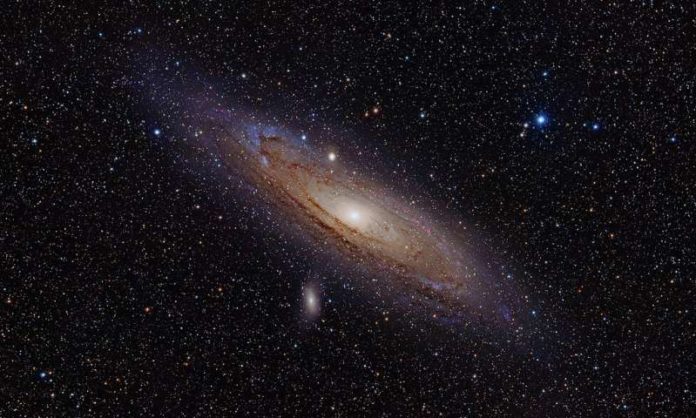German astronomers have recently analyzed Andromeda galaxy and its stellar populations. Their aim was to get insights into the bulge’s structure and formation history.
The Andromeda galaxy also known as Messier 31, or M31 is located some 2.5 million light years away from the Earth. Although, due to its proximity, the galaxy is crucial for such studies.
Now, astronomers at the McDonald Observatory in Texas, by using 2.7 meter telescope, have obtained spectroscopic data of M31. The observational crusade enabled the space experts to reveal basic stellar populace properties of the focal locale of this galaxy, including age, metallicity and alpha-elements abundance.
Scientists noted, “We observed M31 for 14 nights with the integral-field spectrograph VIRUS-W attached to the 2.7m telescope at the McDonald Observatory, Texas, covering the bulge area with a filling factor of 1/3 and sampling the disk along six different directions, reaching approximately one scalelength along the major axis.”
Scientists particularly found that the central 100 arcsec of this galaxy is dominated by old, metal-rich stars at the center with a negative gradient outwards and enhanced in alpha elements. In addition, the study suggests M31’s bulge, as well as bar, have solar metallicities. The team also found that the bar and bulge have a mean age of 10 and 13 billion years respectively.
Scientists noted, “A classical stellar bulge forms together with a primordial disk, from a quasi-monolithic collapse or violent instability of the turbulent inner proto-disk. On larger scales, the proto-disk develops a bar. The bar buckles and transforms the proto-disk into the boxy-peanut B/P bulge. The stars in this region are mainly old.”
Scientists are further planning to study M31 that might shed further light on the sequence of events that built the central regions of this galaxy. Moreover, they will try to calculate the rate of microlensing events expected from the self-lensing of the different populations of the central region of the Andromeda galaxy.
Scientists have published their study in the arXiv pre-print repository.
